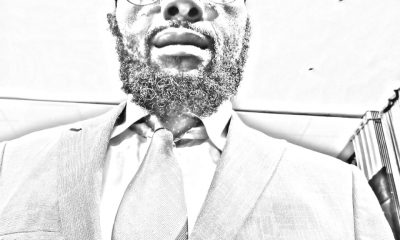society
HISTORY OF DOGONDAJI TOWN AND THE ESTABLISHMENT OF FULANI RULE By Alhaji Muazu Alhaji

HISTORY OF DOGONDAJI TOWN AND THE ESTABLISHMENT OF FULANI RULE
By
Alhaji Muazu Alhaji
All praise is due to Allah,the Lord of the world. Peace and Blessings of Allah be upon the best of
creatures, Prophet Muhammad (PBUH) his household and companions. Peace be upon the believers.
I am extremely delighted at having the opportunity to write something on the history of Dogondaji.
The Genesis of Dogondaji Town can be traced to a group of people called DANGARAWA, who
migrated out of Argungu in Kebbi State. These people established SALAH as their first town and it is
from SALAH that the present-day DOGONDAJI originated. The time of their migration from Argungu
to Salah was not clear.
DANGARAWA:The town of DogonDaji got its Origin from from a group of people called Dangarawa
who migrated out of Argungu in Kebbi State. One of the warriors of the king of argungu named Mai
Kubbi, married the daughter of the King whose name is “Gara”. They latergave birth to a child who
was named Dan gara(Son of Gara), Hence the name Dangarawa.
SALAH: This is the biggest and most populous settlement of all the villages in the present day
Dogondaji District. Salah is situated about 6 Kilometeres north-east of Dogondaji. It was in later
years that Dogondaji outshone Salah in almost all facets of life due to factors like the administrative
supremacy of Dogondaji as the seat of Sarkin Yamma and over a period of time, the Fulani
Reformers came to outnumber the original inhabitants and by their population came to assiduously
wrenchpower from the Dangarawa. The original settlers of Salah came to the place under the
leadership of a man called Dangara Maikubbi.
Therefore, the establishment of salah is always credited to Dangara Maikubbi Obviously a great
farmer, he took the pains of clearing a vast farmland at a place about 6 Kilometers from salah. He
named the farm DOGONDAJI, depicting that it wasa far away place from his original residence. That
farm Dogondaji possessed by Dangara Maikubbi became in later years the present-day Dogondaji
town.
He had the farm walled up and the original walls were said tohave stood for a very long period of
time before their total collapse over the years. A particular section of the original wall of Dogondaji
farm that surrounded the southern part of the town-Dangarawa quarters-survived the longest.
Dangara Maikubbi was still at Salah, but farming at North their beasts and asked for permission from
himto settle and rear their animals in his farm-Dogondaji.Dangara Maikubbi acceded to their
request and the Tuaregs were said to have settled and lived on the farm for about 40 years.
Gradually, with their settlement,many people joined the them at the farm and soon Dogondaji
became populated.
When Dangara Maikubbi finally died at Salah, the mantle of leadership of the Dangarawa fell upon
his brother called Gani. The reign of Dangara Gani coincided with a period whenSheikh Usman
Danfodio left his brother Abdullahi, at Gwandu and was on his way, in company of his followers
(Disciples) including his son Muhammad Bello, to Sifawa when words reached Dangara Gani that the
revered Sheikh and his followers were to pass through his domain enroute to Sifawa. It occurred to
Dangara Gani to ambush Sheikh Usman and his men near a stream along the route that the Sheikh
and his men were expected to follow. Dangara Gani instructed his men to take up position on tall
trees so that the other party on approaching salah could be sighted from afar and the news passed
to him. When the Sheikh’s party was sighted, Dangara gani gave orders that they be attacked. As
soon as the Sheikh realized what they were about to encounter, he too instructed his disciples on
what to do in order to out-maneuver the men of Dangara Gani. The organization of Sheikh’s party was such that when warriors of Dangara Gani saw them, they became frightened and lost their
composure and resolve.
Soon, there was a debacleon Dangara Gani’s side. They fled southwards away from the town of
Salah, to a village in Tambawal District called Bagasakka. The place where Sheikh Usman succeeded
in hoodwinking the Dangara is to date called “ MARUDA”.
With Dangara Gani’s flight, SheikhUsman passed very close to Salah on his way to Sifawa but did not
enter the town. He instead, encamped under a “Baure” tree in a place near one village called
Gangumma that was about 2 kilometers away from Salah. There, the sheikh ordered his son
MuhammadBello to stay behind at Salah.So Muhammad Bello complied with his father’s wish and
entered Salah. He assumed the leadership of the town for the former leader Dangara Gani had fled
to where they were known to have gone.
The Sheikh on his part, proceededwith his journey of about 55 Kilometers from Dogondaji to Sifawa,
while Muhammad Bello lived in Salah for about 7 years. During the said period, he built a Jum’at
mosque and a royal house. The mosque which Muhammad Bello built continued to serve as Jum’at
mosque up to today with some modifications by the people of Salah over the years. The royal house
built by Muhammad Bello is to date the lodge of Sarkin Yamman Dogondaji, whenever he visits
Salah. In that house, two great Sultans were born; Sultan Aliyu Babba and Sultan Aliyu Karami.
Indeed, it was in Dogondaji and its environs that three Sultans were born, thus;
1. Sultan Aliyu Babba, who ruled between 1842-1859. He was the fourth Sultan and he
ruled for 17 years.
2. Sultan Aliyu Karami, who ruled between 1866-1867. He was the sixth Sultan and ruled for a
year. All these two Sultans were born in the royal house built by their father, Sultan
Muhammad Bello.
3. The eighteenth sultan whodescended from Mallam Buhari, son of Sheikh Usman Danfodio,
was born in 1926 in Dogondaji royal house. He is, ofcourse, Sultan Alhaji Dr. Ibrahim Dasuki,
son of Sarkin Yamma Haliru, son of Mallam Mallam Bara’u, son of Mallam Buhari, son of
Sheikh Usman Danfodio(RLA). Sultan Alhaji Dr. Ibrahim Dasuki, the 18thSultan, succeeded his
brother Sultan Abubakar III, the 17thSultan who descended from the Sultan Muhammad
Bello lineage.
In retrospect, Muhammad Bello lived in Salah for about 7 years, wherein those two sultans were
born. He was still in Salah when Dangara Gani came back to formally renounce his earlier rebellion
against Muhammad Bello and his father. He was pardoned but asked to go with his men and settle
at Dogondaji, which was the farm initially developed by his late brother Dangara Maikubbi. The
settlement of Dangara Gani and some of the Dangarawa with him marked the beginning of the
settlement of Dangarawa at the present-day Dogondaji town. Dangara gani was therefore the first “
Habe” ruler of Dogondaji.
Later, Muhammad Bello left Salah for Sokoto. On his departure, he bestowed the leadership of Salah
to a Fulani man from among his father’s disciples, aman who came to join the Sheikh from a village
named Masama in Gwandu area. The man was called Danyarba, who thereforere became the first
Fulani man to be made the District Head of Salah with the title of ‘Magajin Salah’. The title of
Magajin Salah is, to date, in the house of Danyarba. Below is the supposedly hierarchical order of
village Heads of Salah.
SALAH-VILLAGE HEADS
Magajin Salah Danyarba
1. Magajin Salah Aliyu
2. Magajin Salah Aliyu
3. Magajin Salah Abdu Walijo
4. Magajin Salah Bube sarkin lafia
5. Magajin Salah Buhari
6. Magajin Salah Isah
7. Magajin Salah Garbai
8. Magajin Salah Buhari Mijimbuu
9. Magajin Salah Gabdo
10.Magajin Salah Modibbo Abdullahi
11.Magajin SalahAhmadu (1920-1951 =31 years)
12.Magajin Salah Muhammad Bello (1951-1988 = 37 years)
13.Magajin Salah Nata’ala (1988)
14.Magajin Salah Ahmadu Maccido
When Muhammad Bello departed Salah and still under the leadership to Danyarba, the Dangarawa
were still under the leadership of Dangara Gani at Dogondaji. Years later, so many people ranging
from Hausa’s, Bugaje’s, Kanuri’s to Fulanis joined the Dangarawa at Dogondaji. The Hausa language
came to assimilate all other languages and flourished as the major language.
Around the same period, Mallam Abdullahi Bara’u (the grandfather of the 18thSultan) was at
Tambawal with his father Mallam Buhari, son of Shehu Usman Danfodio. Mallam Abdullahi Bara’u
ruled Tambawal after his elder brother Umaru Buhari for three years as Sarkin Tambawal. After
three years, he abdicated in favor of his elder brother, Mallam Umaru Buhari. With his abdication,
Mallam Abdullahi Bara’u left Tambawal and journeyed across the land to Kontagora and its environs.
At kontagora, he waged several reformatory wars and consequently conquered the town of Rijau
and prior to that, had conquered on his way, many towns in Gummi area, like the village of Falam
Tsibiri. He waged all those wars in his zeal to follow in the footsteps of his grandfather, Sheikh
Usman Danfodio and perfect the religion of Islam. With his victory over Rijau, he settled there up to
the period when Ahmadu Atiku became the Sultan of Sokoto. Sultan Ahmadu Atiku(the fifth Sultan
from 1859-1866) demanded that Abdullaghi Bara’u should return to Sokoto and live with him.
Mallam Abdullahi Bara’u returned to Sokoto , after sometime, Sultan Ahmadu Atiku asked Abdullahi
Bara’u to go back to Dogondaji near his father’s domain, Tambawal. Sultan Ahmadu Atiku, therefore
entrusted Bara’u to Dangara Gani.
Mallam Abdullahi Bara’u lived at Dogondaji with Dangara Gani up to the time when the latter died.
After Dangara Gani’s death, he was succeeded by Dangara Dandammu. When Dangara Dandammu
settled as the leader in Dogondaji, he divided the land of Dogondaji into two and gave one half to
Mallam Abdullahi Bara’u and retaining the other half to himself. Mallam Abdullahi Bara’u therefore
built a Jum’at mosque, a royal house and brought more scholars to Dogondaji in order to help him
propagate the religion furtherwithin the town and its vicinity, as well as serve as ideal role models of
Islamic ways of life. They lived like that in harmony up to when Dangara Dandammu died. On his
death, Mallam Bara’u merged the two divisions of Dogondaji into one solid town under his
leadership. That period marked the beginning of Fulani exclusive leadership at Dogondaji.
Henceforth, the position of Dangara ceased to be that of a paramount ruler, but that of a Head of Dangarawa, within the town of Dogondaji. The Dangarawa continuedto have farmlands both at
Dogondaji and Samma.
With the merger of the two divisions of Dogondaji, Mallam Abdullahi Bara’u assumed the title of
Sarkin Yamma. As a paramount ruler, he waged more wars and conquered a village called Falan
Tsibiri. He later established two towns, Madara and Tongonmere. Besides the establishment of these
two towns, he continued with his reformation wars in other towns.
Mallam Abdullahi Bara’ureigned for 13 years and died in 1879. Before his death, many traditional
Islamic Schools were established for promoting Islamic awareness and culture in the people and
strengthening their religious beliefs.
After Mallam Abdullahi Bara’u, his eldest son, Mallam Ibrahim Bara’u succeeded him in 1879. He too
was like his father, especially in respect to boosting and consolidating the religion of Islam. He was a
great warrior and left many legacies at his death. He bequeathed about 90 slaves, 72 guns and 90
horses. Sarkin Yamma Ibrahim died after 9 years in office in 1888. May Allah grant him eternal rest,
Ameen.
After the demise of Mallamn Ibrahim, the mantle of leadership went to his younger brother
Muhammad Mashayabo, who ascended the throne in 1888. A great warrior indeed who took great
delight in riding horses and whose dexterity with horses was said to be legendary. He had ventured
out on wars a number of times. In his time, the British colonialists invaded and conquered Sokoto in
1903, when Sultan Attahiru Ahmadu was on the throne. The Eid-el-Kabir of that year was celebrated
on Wednesday and on the following Friday, after Jum’at prayers, the Sultan mounted his horse,
wearing a coat of chain-mail and wielding in his hands his sword and shield. Together with his men,
he passed the night at Giginya. The Emir of Zamfara, Abdullahi also came withhis forces to back the
Sultan and camped at Marmaron Tawaye.
The British, on their part, camped at Jaredi. On Saturday, the British were said to have fired some
spluttering shots at the Sultan’s party at Farfaru. The next day, Sunday, the two forces met in what
can be called a gruesome encounter. In that battle, Sa’iUmaru, and one of the retainers were killed.
So also was the son of Ahmadu Rufa;I who was the Head of Takatuku town;Jabbi the son of
Abubakar, son of A hmadun Rufa’I, son of Sheikh Usman DanFodio and a member of other people.
The battle reached a high momentum to such an extent that the Emir of Zamfara, Abdullahi left
Marmaron Tawaye and came to where the sultan was. Between them, a decision was reached to the
effect that they should migrate. So they set off. Initially, they had had wanted to pass through the
gate of Atiku, but the gate proved impossible due to much congestion caused by the large gathering
of warriors. They therefore made a detour and passed by the city and through the gates of
Taramniya and Rini.
The Sultan, in company of men like Khadi Abdullahi, son of Liman; Muhammadu of the House of
Kade, grandson of Mustafa, son of MallamMaiyaki;sons of the Sultan Ahmadu;Maigandi;Bunu and
host of others took a road leading to a place called Fakon Idi on their way to Rara. They stopped over
at Gandi. From Gandi, they went eastwards, but leaving behind some nobles who did not proceed
with the sultan. The party which the sultan left at Gandi were with the Vizier Buhari. On the Sultans
departure, the Vizier advisedthe others to proceed and follow the Sultan but making it clear to them
that he, on his own understanding did not think that the conditions necessitating a migration were
fulfilled. The nobles supported his view and told him that they would rather stay with him.
Vizier Buhari, together with some of the men with him trooped to a nearby village called Dinawa and
settled there. But Marafa Muhammad Maiturare and Shehu Sarkin Yamman Kware, on their own part together with some men proceededto Maidaji and stayed there. Then the rest of the men
scattered to other villages in groups. After a while, the british summoned those groups back to
Sokoto, and they all acquiesced and went back. Initially, Sarkin Gobir of Isa wanted the British to
install him as the new Sultan, but the British, instead formed a Council of king-makers andvested in it
the responsibility of selecting a worthy candidate. Sarkin Gobir who earlier sought the position from
the British, did not emerge, insteadthe Galadima of Sokoto, Shaihu told the british that they had
chosen Attahiru, son of Aliyu who should be installed as the Sultan. Galadima Shaihu explained
further that Attahiru, son of Aliyu, had in fact been selected in the past, but due to some reasons his
selection was not ratified. Therefore, the British ratified the selection of Attahiru, son of Aliyu on the
following conditions:
1. Henceforth, no slave trading would be allowed in theland and there would be no more
cutting off of the hands of any thief, and in whatever town the British settled they would be
supplied with (a) Flour, (b) Eggs, (c) Chickens, which they would accept and pay for. In a nutshell, that was how Sokoto was subdued by the British in 1903.
Back to the subject of our discussion the Sarkin Yamma Muhammad Mashayabo, in whose tenure at
Dogondaji, Sokoto was subjugated, held port in Dogondaji for 16 years and left as legacies, many
horses and slaves. He died in 1904. May Allah grant him eternal rest, Ameen.
On the demise of Sasrkin Yamma Muhammad, his younger brother, Aliyu Haido succeeded him. He
ascended the throne at Dogondaji at the age of 41 years. He became Sarkin Yamma after the the
British had conquered Sokoto.there was not much activity during his tenure as Sarkin Yamma. He
died at the the age of 45 having ruled from 1904-1909. May Allahgrant him eternal rest, Ameen.
Sarkin Yamma Aliyu Haido was succeeded by his younger brother Mallam Haliru Bara’u in 1909.it is
crucial to note that all the aforementioned “Sarakunan Yamma” were the sons of Mallam Abdullahi
Bara’u. Mallam Haliru Bara’u ascended the throne as sarkin Yamma 6 years after Sokoto was
conquered by the British forces. His period as Sarkin Yamma was marked by great occurrences.
Many significant events happened in the history of Dogondaji during his reign. For it was in his time
that Dogondaji witnessed an expansion in terms of its landmass by acquiring new villages into its
fold. First, was the expansion of the town of Dogondaji when “Ruggar Gari” was annexed to the
Dogondaji proper. Then,came the acquisition of about 7 other towns –Ruggar Shauda, Kaurar
Samna, Gambu, Bancho, Doliyo, Siringo and Kalgon Magaji. Salah town got its share of this expansion
by getting Jinju annexed to it. Prior to thattime, all villages now acquired by Dogondaji were under
Gwandu.
It was also in his time that the first motorable road from Sokoto to Jega was constructed with the
road passing by Dogondajitown from the northern side. He has been in office for 10years.
Then came the establishment of Dogondaji Elementary School in 1925, when Sarkin Yamma was in
his 16thyear in office. Mallam Altine Kilgoriwas the foundation Head teacher of the Elementary
school, coupled with the high degree of cooperation, it enjoyed from the nobility, as well as the
commoners, the school gained greater fame in the area. Another famous teacher who did a lot for
the school was Mallam AbdurRa’ufu Sokoto, who was a gifted and diligent teacher. His total
commitment culminated into getting a flag for recognition for the school. Across the said flag were
written the words; THE PEOPLE PEOLE OF DOGONDAJI GOT ME BY DINT OF GREAT EFFORT.
All those developments happened in the time of Sarkin Yamman Dogondaji, Mallam Haliru Bara’u.
Dormitories were built in the school’s compound to provide lodging for some of the students who came from far places. For instance, the late Sheikh Abubakar Muhammad Gummi came from
Gummi;Mallam Mairugga, son of Dan Galadiman Maradu, came from Tambawal and some others
from Kebbi. At the end of Sarkin Yamma Haliru Bara’u’s 27 years in office, the mantle of leadership
passed on to the grandsons of Mallam Abdullahi Bara’u and his tradition has continued to date.
From among the grandsons of Mallam Abdullahi Bara’u, the first to become Sarkin Yamma was
Mallam AbdulKadiri Maccido. He was a son to the elder brother of the late ASarkin Yamma Mallam
Haliru Bara’u. He was only destined to rule for a year.
Mallam Muhammafd Mahe then succeeded his late brother, Mallam AbdulKadiri Maccido as Sarkin
Yamma in 1937 equivalent to 1358 A.H. With this, he became the second grandson of Mallam
AbdullahiBara’u to ascend to the position of Sarkin Yamma. In his time, the town of Dogondaji was
further expanded at the eastern, western, and northern sides. The town was planned in a such a way
that all streets were widened and a road was constructed that started at the extreme eastern side of
the town, cutting through the town and ending at the extreme western side. A similar road was
constructed to link the southern and northern sides of the town. Concrete wells were also constructed in 1937 at the school, Ruga quarters of the town and the well of Magajin Gari.
A Government department for Agriculture was also built at the eastern side of Dogondaji town. Bulls
were also brought and sold to the people, which marked the beginning of the use of Bulls in
ploughing farmlands. Then a Veterinary Clinic was also built at a place called Asarara, near Barkeji.
Asarara was initially a station reserved for the nomadic Fulanis, with facilities for existence, thanks to
the efforts and foresight of late Alhaji Alhaji Dogondaji, the Sarkin Shanu of Sokoto, son of Haliru
Bara’u, the 5thSarkin Yamma of Dogondaji. Then came the Dogondaji town Dispensary, a construction company (NDR) was also established
about2 kilometers. East of the town. The company constructed the Sokoto-Jega road. As a result of
the establishment of that company, many young men of Dogondaji origin were trained as Drivers,
Mechanics and welders. It was in the time of Sarkin Yamma Muhammad Mahe that a Government
Teachers’ college was established and its name was later changed to Abdullahi Bara’u Secondary
school. The school was built near a small town –Rugar Shauda which which was then about ½
kilometer away from Dogondaji but is now more or less considered as in Dogondaji proper. In 1966,
on the orders of the late Sardauna, Alhaji Sir Ahmadu Bello, a borehole pump was installed.
In the time of Sarkin Yamma Muhammad Mahe, the people of Dogondaji, through community
labour, were able to construct a road from Dogondaji, passing through Salah to Sanyinnar Daji-the
length of which was 15 kilometers. Lodgings were also built in Dogondaji and other villages solely to
cater for Tourists’ needs.
Sarkin Yamma Muhammad Mahe ruled Dogondaji for 38 years i.e from1937-1975. He died on
Tuesday February 4th 1975, after a protracted illness. May Allah grant him eternal rest, Ameen.
After Sarkin Yamma Muhammad Mahe, then his younger brother Mallam Haliru Ummarun Bara’u,
who had been brother turbaned as Dangaladiman Barkeji by Sarkin Yamma Haliru Bara’u after the
demise of his father, was turbaned as the new Sarkin Yamma. He was the third among the grandsons
of Mallam Bara’u,who held the title of Sarkin Yamma. Mallam Haliru Ummarun Bara’u was turbaned
Sarkin Yamman Dogondaji on Friday, May 16th, 1976. During his tenure in office, Dogondajiwas
developed further in terms of its geographical spread. He also expanded and modernized three royal
houses by the erection a duplex, provision of additional royal courts and entrance doors.
Sarkin Yamma Haliru Ummarun was a man who enjoyed immense respect from his subjects as a
result of his simplicity, approachability and administrative competence. He showed keen concern in whatever interested the people of Dogondaji. He encouraged the promotion of Traditional sporting
activities like Boxing, wrestling, “Sharo” e.t.c. he was famous for his interest in horses and gorgeous
dressing. It was due to his virtues that Mallam Yusuf A. Muhammad Dogondaji composed a poem in
his honor wherein he said;
1. I am seeking (help) from God
2. For the sake of Salutation(to Prophet) and prayers
3. For this poem I am preparing for you (Sarkin Yamma)
1. I send salutation to our Prophet
2. Mustapha (S.A.W) our leader
3. Whoever asks from him, he gets e.t.c
Sarkin Yamma Haliru Ummarun Bara’u died around 10 o’clock in the morning on Monday, December
20th,1977. May Allah grant him eternal rest, Ameen.
At the death of Haliru Ummarun Bara’u, his younger brother Alhaji Aliyu Haliru Bara’u got elevated
from his position as Makaman Sokoto, to the position of Sarkin Yamman Dogondaji in 1978.
It was in his time that mud buildings gave way to modern concrete ones, especially in the royal
house. He lived with his family in the modern building alongside the traditional one that was
adjacent to the new one. It was also during his tenure that the electrification project of Dogondaji by
the Rural Electrification Board(R.E.B) was started. The town market got many more shops. A well, to
which was fitted a pressure pump and connected to a very big water reservoir was dug. It was
second of its kind for the first one was constructed in 1966 by Sardauna Sir Ahmadu Bello. Taps,
which got their supply from the reservoir, were constructed at thye Dispensary and at the town’s
police station, which was situated east of the town’s market. Police were also deployedto Dogondaji
under an Inspector.
Just like his predecessors, Sarkin Yamma Alhaji Aliyu Haliru did a lot to promote religion. He
encouraged the formation and strengthening of some Islamic Societies. Throughout the land, Imams
and Islamic Scholars of thetraditional schools were made to undergo refresher courses in the
science of the Holy Qur’an. Islamic societies like the Jama’atul Nasril Islam and Fityanul Islam were
established for the propagation of Islam. A General Hospital was also built in his time atthe north
western side of the town and the Jum’at mosque was modernized, near the former mosque which
was situated very close to the royal house built by Mallam Abdullahi Bara’u. For after Mallam
Abdullahi Bara’u, his son, Mallam Ibrahim built a new royalhouse which to date serves as the
Dogondaji royal house.
Among the hobbies of Sarkin Yamma Aliyu Haliru Bara’u was horse-riding, for he was used to riding
horses since his childhood. He too dressed in a gorgeous way. Ultimately, Sarkin Yamma Alhaji Aliyiu
Bara’u ruled for 11 years and died in the night around 8.00pm on a Friday in 1988 after a few days
illness. May Allah give him eternal repose, Ameen. Yusuf A. Muhammad Dogondaji composed a
poem condoling all for the great loss. The poem has about 130 stanzas.
It started thus;
1. We are beseeching you oh Allah
2. We have sent our salutations to the prophet
3. Forgive (him) Sarkin Yamma.
Likewise during his turbanning as Sarkin Yamma, Alhaji Adamu wrote a poem on that occasion,
wherein he brought all the rulers of Dogondaji in hierarchical order , from Mallam Bara’u to Alhaji
Haliru Bara’u
BRIEF ACCOUNT ON THE LOCATION OF MAUSOLEUMS OF ALL THE AFOREMENTIONED
SARAKUNAN YAMMA.
1. Mallam Abdullahi Bara’u was buried in his royal house and immediately after the first royal
court, he died in 1879.
2. Mallam Ibrahim Bara’u was buried next to his father (the first Sarkin Yamma) at Dogondaji.
He ided in 1888.
3. Mallam Bara;u was buried ina ahouse in Sokoto city. He died in 1904.
4. Aliyu Haido was buried in the royal house built by his elder brother , Mallam Ibrahim. The
grave is the the North-Easternside of the house, near some Balanites aegyptiaca trees. He
died in 1909.
5. Mallam Haliru Bara’u was buriedin a house he moved to, just before his death in Airan
Quarters. He died in 19433.
All the above were Mallam Bara’u’s sons and below are 4 of his grandsons in the order in which they
ruled.
6. M. AbdulKadir Maccido, son of Ibrahim, was buried in the royal house built by his father
near the grave of his father’s younger brother, Aliyu Haido, by the Balanites aegyptiaca
trees. He died in 1937.
7. Mallam Muhammad Mahe was buried in the royal house built by Ibrahim. His grave is at the
southern part of the house . he died in 1975.
8. Mallam Halirun Bara’u was buried at the tomb of Shehu Usman DanFodio at Sokoto by the
side of his grandfather Mallam Buhari son of Shehu. He died in 1977.
9. Mallam Aliyu Halirun Bara’u was buried in the royal house built by Ibrahim Bara’u. He lies
next to his brither Mallam Muhammad Mahe. He died in 1988.
10.All the aforementioned four were grandsons of Mallam Bara’u. May Allah grant them all
eternal rest, Ameen.
SARKIN YAMMAN DOGONDAJI ALHAJI SHEHU UMARU
Sarkin Yamman Dogondaji Alhaji Aliyu Halirun Bara’u was succeeded by his younger , Alhaji Shehu
Umarun Bara’u, who was turbaned on Friday August 12th, 1988 at about 10 O’clock in the morning.
From the time he ascended the the throne up to date, Dogondaji has witnessed some changes and
developments, thus:
a. In his time, the Rural Electrification Station of Dogondaji was connected to the national Grid.
The rural electrification was initiated by Alhaji Mu’azu Alhaji and it connected Dogondaji,
Tambawal and Gwandu with a Sub-station at Malisa.
b. The Dogondaji General Hospital, which was built in the time of Sarkin Yamma Alhaji Aliyu
Halirun Bara’u was formallyopened in his time. The Hospital was built through the influence
of Alhaji Mu’azu Alhaji(a son to the elder brother of Sarkin Yamma Alhaji HaliruBara’u)
when he was the Secretary, Sokoto State Health Services Management Board (HSMB)
c. In his time, the Dogondaji town market was further expanded at both the eastern and
northern parts.
d. In his time, a motor park was also built, east of the town’s market and shops adorned the
northern side of the motor park. The local Government acquired many plots, including some part of the royal farmlands for the purpose of further expansion of the town and this was at
the western section of the town. It was also in his time that the name of the Government
Teachers’ College was changed to Abdullahi Bara’u Secondary School. There were many
more similar changes.
SARKIN YAMMAN DOGONDAJI NASIRU SHEHU UMAR
After the death of his Father and by the will of God Almighty, his son Alhaji Nasiru Shehu Umar was
appointed as the New Sarkin Yamman DogonDajimaking him the eleventh king on the throne and
as the first ever king from the Great Grand children of Abdullahi Bara’u, son of Buhari, son of Usman
Danfodiyo, after the death of his parent and grandparent.
Alhaji Muhammad Nasiru, the son of Shehu Umar, the son of Dangaladima Umar, the son of Bara’u,
the son of Buhari, the son of Usman Danfodio was appointed the king as Sarkin Yamman DogonDaji
on the 9/12/2017 and is still the serving king till date.
It was during his time that the palace gate was rebuilt, that is, the royal house. It is decorated with
modern furnitures and chairs. There has been a lot of progress and he is still trying to emphasize
religion such as heading the commissioning of some mosques around the villages of Dogondaji and
appointing imams for them.
May God bless the king and guide him in all his future affairs, also give him the ability to do justice
and stick to the truth as his parents and ancestors did. Ameen.
DOGONDAJI DISTRICT
The Dogondaji District shares common borders with yaboat the east (about 1 kilometer) and about
16 kilometers at the north-east, it shares a common boundary with the district of Ardon Sanyinna. In
the north, it shares borders with Gwandu, as well as , in the south. In the south, it shares borders
with Tambawal, as well as Gummi. Then, in the south-east, it borders the district of Sarkin Burmin
Jabo. This can be analyzed thus:
a. At the east, it borders with yabo district (1km)
b. At the south-east, it borders with jabo district (10 km)
c. At the south, it shares border with Gummi (20km)
d. At the south-west it has common borders with Tambawal
e. At the west, it shares borders with Gwandu (2 km)
f. At the north-west, it borders gwandu (5 km)
g. At the north, it shares borders with Gwandu (1/2 km)
These are the Districts that share common borders with Dogondaji.
NAMES OF FULANI RULES PERIOD DURATION
1. Mallam Abdullahi Bara’u 1866-1879 13 years
2. Ibrahim Bara’u 1879-1888 9 years
3. Muhammad Bara’u 1888-1904 16 years
4. Aliyu Haido Bara’u 1904-1909 5 years
5. Halirun Bara’u 1909-1936 27 years
6. AbdulKadir Maccido Ibrahim 1936-1937 1 year
7. Muhammad Mahe 1937-1975 38 years
8. Haliru Ummarun Bara’u 1975-1977 2 years
9. Aliyu Halirun Bara’u 1978-1988 10 years
10.Usman Ummarun Bara’u 1988-Date
NAMES OF HABE RULERS-DANGARA (TOWN/ DISTRICT HEADS)
Before the advent of Fulanio rule in Dogondaji, two Habe rulers with the title of Dangara, have ruled
Dogondaji and they are;
1. Dangara Maikubbi who ruled at Salah
2. Dangara Gani, who succeeded Maikubbi who migrated to Dogondaji. With his death, power
shifted to Fulani rulers
NAMES OF THOSE WHO HELD THE TITLE OF DANGARA (AS A WARD HEAD) IN DOGONDAJI
1. Dangara Maikubbi, who lived at Salah as a village head
2. Dangara Gani, who lived first at Salah and later at Dogondaji as a Village Head
3. Dangara Dandammu Ward Head of Dogondaji Town
4. Dangara Dammakunga, Ward Head of Dogondaji Town
5. Dangara Dankaboyi, Ward Head of Dogondaji Town
6. Dangara Dantikara, Ward Head of Dogondaji Town
7. Dangara Barawarka, Ward Head of Dogondaji Town
8. Dangara Mayaki, Ward Head of Dogondaji Town
9. Dangara Masallaci, Ward Head of Dogondaji Town
10.Dangara Ango, Ward Head of Dogondaji Town
11.Dangara Dodo, Ward Head of Dogondaji Town
12.Dangara Aliyu, Ward Head of Dogondaji Town
13.Dangara Ummarun Aliyu, Ward Head of Dogondaji Town
14.Dangara Abdullahi Muhammad, Ward Head of Dogondaji Town
VILLAGES IN DOGONDAJI DISTRICT
DOGONDAJI
Ruggar Shauda
Kaurar Samma
Siringo
Magayi
Baban Idi
Gidan Hankurau
Illela Birni
Bancho
Kere U/Fako
Ruggar Kaya
Sonsoni
Gidan Icce
Masaurari
Mana
Adarare
IMPORTANT/ PARAMOUNT VILLAGE HEADS
1. DangaladimaBarkeji
2. Sardaunan Dogondaji
3. Magajin Salah
4. Dikko Nabaguda
5. Dikkon Gambu
6. Bancho
7. Shabrar Hakimi
8. Sabawa
VILLAGES AND THEIR HEADS BEFORE THE CREATION OF THE MAIN DISTRICT
1. DogonDaji –Galadima
2. Barkeji –Dangaladima
3. Salah –Magajin Salah
4. Nabaguda –Dikkon Nabaguda
5. Sabawa –Zarga/Magaji
6. Gambu-Dikko
7. Bancho -Dikko
This historical report written by Alhaji Muazu Alhaji is proudly sponsored by Alhaji Dr. Abbas A. Waziri(Chairman Resident Capital Group)
Politics
Customs at the Crossroads: When Lawmakers Look Away and the Executive Looks Aside
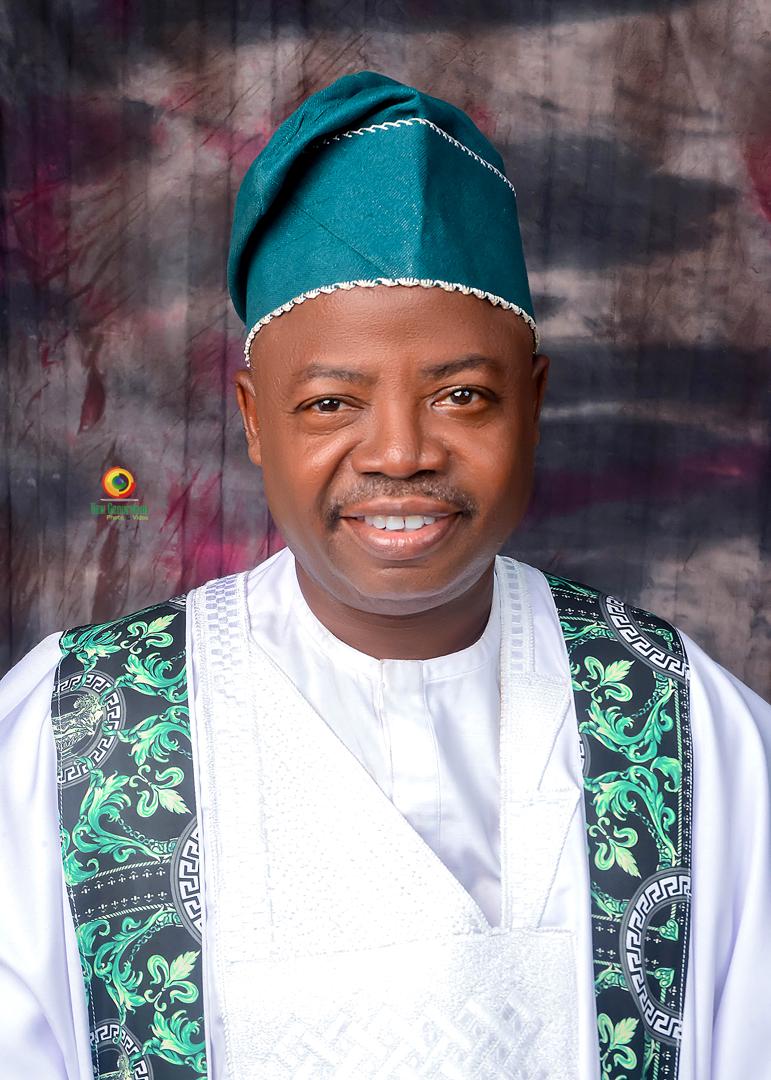
Customs at the Crossroads: When Lawmakers Look Away and the Executive Looks Aside
By Dr. Bolaji O. Akinyemi
In a democracy, legislative oversight is the scalpel that cuts through deceit, inefficiency, and corruption in public institutions. It is the people’s last institutional shield against abuse of power. But what happens when that shield becomes a shelter for the very rot it is meant to expose? And what happens when the Executive arm, whose duty is to supervise its agencies, pretends not to see?
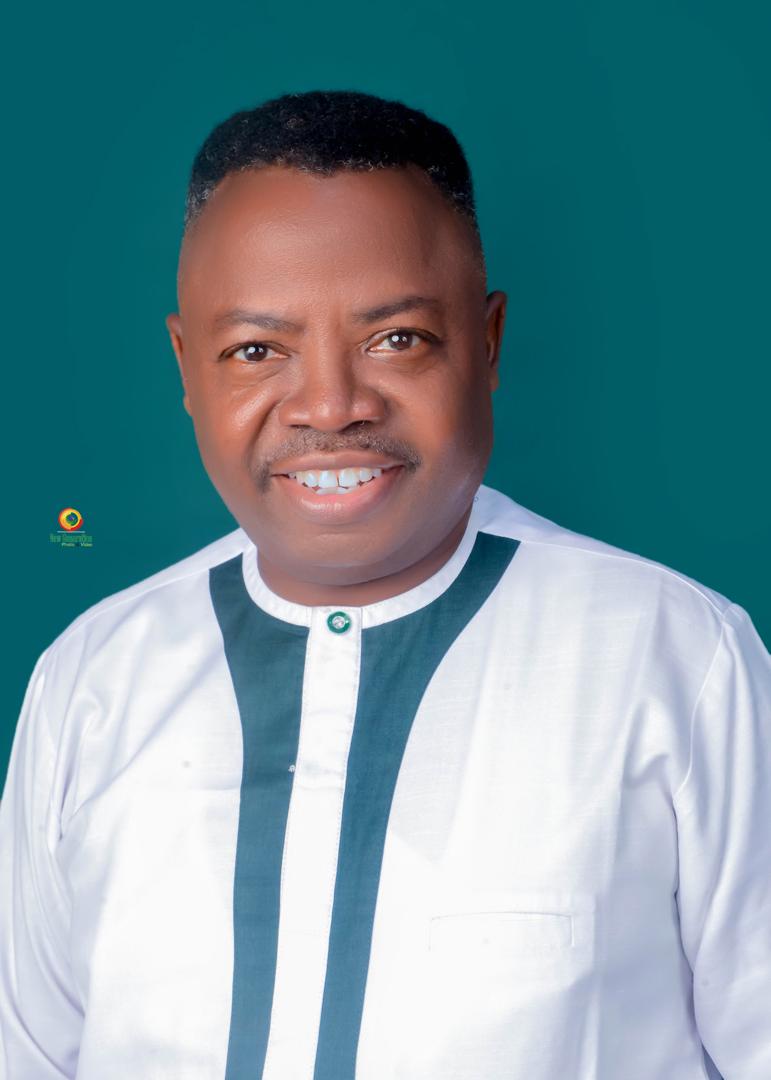
The unfolding drama between the National Assembly and the Nigeria Customs Service (NCS) reveals more than a policy dispute. It exposes a dangerous triangle of confusion, complicity, and economic sabotage. At stake is not only the rule of law but the survival of an economy already gasping under inflation, a weak naira, and suffocating costs of living.
The House Talks Tough
In June 2025, Nigerians saw a glimpse of legislative courage when the House of Representatives Committee thundered at Customs:
> “Nigerian Customs Service, by June 30, must not collect CISS again. You are to collect only your 4% FOB assigned by the President. Even the 7% cost of collection you currently take is illegal—it was an executive fiat of the military, not democratic law. Any attempt to continue these illegal collections will be challenged in court. The ‘I’s have it.”
The voice was firm, the ruling decisive. Nigerians expected a turning point.
But the righteous thunder of the House was quickly muffled by the Senate’s softer tone, which suggested not the enforcement of the law but a readiness to bend it.
Senate: Oversight or Escape Route?
At a Senate Customs Committee session, Senator Ade Fadahunsi admitted openly that Customs has been operating illegally since June 2023. Yet rather than demand an end to illegality, he extended a lifeline to Comptroller-General Bashir Adeniyi:
> “If we come back to the same source… the two houses will sit together and see to your amendment so you will not be walking on a tight rope.”
But should Adeniyi be handed a loose rope while Nigeria’s economy hangs by a thread?
Instead of accountability, the Senate Customs Committee floated adjustments that would make life easier for Customs. The nation was given hints about fraudulent insurance and freight data, but instead of sanctions, what we saw was a search for escape routes. This is not oversight—it is overlook.
Smuggling and Excuses
The Senate Committee also lamented cross-border smuggling—Nigerian goods like cement flooding Cotonou, Togo, and Ghana at cheaper prices than in Nigeria. Senator Fadahunsi blamed the Central Bank’s 2% value deposit for encouraging the practice.
But where are the Senate’s enforcement actions—compliance checks, stiffer sanctions, cross-border coordination? None. The result is predictable: smugglers prosper, reserves bleed, and ordinary Nigerians pay more for less.
A Bloated Customs Budget
The Service’s 2024 capital allocation ballooned to ₦1.1 trillion from ₦706 billion. Instead of channeling these resources into modern trade systems, Customs is expanding empires of frivolity—such as proposing a new university despite already having training facilities in Gwagwalada and Ikeja that could easily be upgraded.
Oversight is not an afterthought; it is the legislature’s constitutional duty. To see waste and illegality and yet propose amendments that would legalise them is to turn oversight into overlook.
Customs has about 16,000 staff, yet many remain poorly trained. Rather than prioritise capacity building, the Service is busy building staff estates in odd locations. How does Modakeke—an inland town with no border post—end up with massive Customs housing projects, while strategic border towns like Badagry, Idiroko, and Saki remain neglected? Is Bashir Adeniyi Comptroller-General of Customs—or Minister of Housing?
The 4% FOB Levy: A Policy Blunder
The central controversy is the Federal Government’s plan to replace existing port charges with a new 4% Free-On-Board (FOB) levy on imports.
Nigeria is an import-dependent nation. This levy will instantly hike the costs of cars, spare parts, machinery, and raw materials—crippling industries and punishing consumers.
Already, the consequences are biting:
A 2006 Toyota Corolla now costs between ₦6–9 million.
Clearing agents who once paid ₦215,000 for license renewal must now cough out ₦4 million.
New freight forwarder licenses have jumped from ₦600,000 to ₦10 million.
Customs claims the revenue is needed for its modernisation programme, anchored on a software platform called B’Odogwu. But stakeholders describe this so-called “Odogwu” as epileptic—if not comatose. Why commit trillions to a ghost programme that will be obsolete by January 2026, when the Nigerian Revenue Service is set to take over Customs collections?
Industry Raises the Alarm
The Manufacturers Association of Nigeria (MAN) has warned that the levy will worsen inflation, disrupt supply chains, and hurt productivity.
Lucky Amiwero, President of the National Council of Managing Directors of Licensed Customs Agents, calls the levy “economically dangerous.” His reasoning is straightforward:
The 4% FOB levy is much higher than the 1% CISS it replaces.
Peer countries like Ghana maintain just 1%.
The new levy will fuel inflation, raise the landed costs of goods, and destabilise the naira.
He also revealed that the Customs Modernisation Act, which introduced the levy, was passed without Senate scrutiny or meaningful stakeholder consultation. He estimates that the levy could add ₦3–4 trillion annually to freight costs—burdens that will be transferred directly to consumers.
Who Is Behind the “Odogwu” Masquerade?
The haste to enforce this levy, despite its looming redundancy, raises disturbing questions. Who benefits from the “Odogwu” project draining trillions? Why the rush, when NRS will take over collections in a few months?
This masquerade must be unmasked.
The Price Nigerians Pay
For ordinary Nigerians, this policy translates into one thing: higher prices. Cars, manufactured goods, and spare parts are spiraling beyond reach. A nation struggling with inflation, unemployment, and a weak currency cannot afford such reckless experiments.
So, while the Senate looks away, the Executive cannot look aside.
The Executive Cannot Escape Blame.
It is easy to focus on the failings of the legislature. But we must not forget: the Customs Service is an agency of the Federal Ministry of Finance, under the direct supervision of the Honourable Minister of Finance, Mr. Wale Edun.
If Customs is breaking the law, wasting resources, or implementing anti-people policies, the buck stops at the Executive’s table. The Minister of Finance is Chairman of the Customs Board. To fold his hands while the Service operates in illegality is to abdicate responsibility.
History gives us a model. In 1999, the Minister of State for Finance, Nenadi Usman, was specifically assigned to supervise Customs and report directly to the President. Meanwhile, Ngozi Okonjo-Iweala focused on broader fiscal and economic policies. That division of responsibility improved accountability. Today, the absence of such an arrangement is feeding impunity.
President Tinubu and his Finance Minister must act decisively. Oversight without executive will is a dead letter.
A Call to Accountability
The truth is stark:
Customs has been operating illegally since June 2023 to the Senate’s own confession.
The 4% FOB levy will deepen inflation and worsen economic hardship.
The Ministry of Finance bears ultimate responsibility for Customs’ conduct.
Until importing and consuming, Nigerians demand accountability—of the Comptroller-General, the Senate, and above all, the Finance Ministry—this bleeding will continue.
Nigerians deserve better. They deserve a Customs Service that serves the nation, not a privileged few. They deserve a House that enforces its resolutions, not one that grandstands. They deserve a Senate that upholds the law, not one that bends it. And above all, they deserve an Executive that does not look aside while illegality thrives under its ministry.
Only public pressure can end this indulgence. If Nigerians keep silent, we will keep paying the price—in higher costs, weaker currency, and a sabotaged economy.
Citizens’ Charge: Silence is Not an Option
Fellow Nigerians, the Customs crisis is not a drama for the pages of newspapers—it is a burden on our pockets, our businesses, and our children’s future. Every illegal levy is a tax on the poor. Every abandoned oversight is an open invitation to corruption. Every silence from the Executive is an approval of impunity.
We cannot afford to fold our arms. Democracy gives us the power of voice, the duty of vigilance, and the right to demand accountability. Let us demand that:
The Senate and House of Representatives stop playing good cop, bad cop, and enforce the law without compromise.
The Ministry of Finance takes full responsibility for the Customs Service, supervising it in the interest of Nigerians, not vested interests.
The President intervenes now, before the Service crosses the dangerous line of turning illegality into policy.
History will not forgive a people who suffered in silence when their economy was bled by recklessness. Silence is complicity. The time to speak, to write, to petition, to protest, and to demand is now.
Customs must serve Nigeria—not sabotage it.
Dr. Bolaji O. Akinyemi is an Apostle and Nation Builder. He’s also the President of Voice of His Word Ministries and Convener Apostolic Round Table. BoT Chairman, Project Victory Call Initiative, AKA PVC Naija. He is a strategic Communicator and the CEO, Masterbuilder Communications.
Email:[email protected]
Facebook:Bolaji Akinyemi.
X:Bolaji O Akinyemi
Instagram:bolajioakinyem
religion
Apostle Johnson Suleman: Firebrand of Faith, Prophet to the Nations, Voice to a Generation
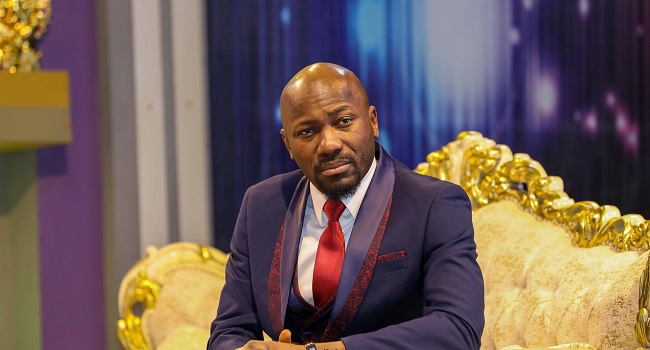
Apostle Johnson Suleman: Firebrand of Faith, Prophet to the Nations, Voice to a Generation
By Femi Oyewale
In the beginning, there was just one man with a burning vision. Today, that man has become a global force whose voice thunders across continents, whose prayers ignite miracles, and whose mission is transforming destinies worldwide. He is Apostle Johnson Suleman, the fiery Restoration Apostle, the humanitarian preacher, and the global trailblazer reshaping the Christian faith for a new generation.
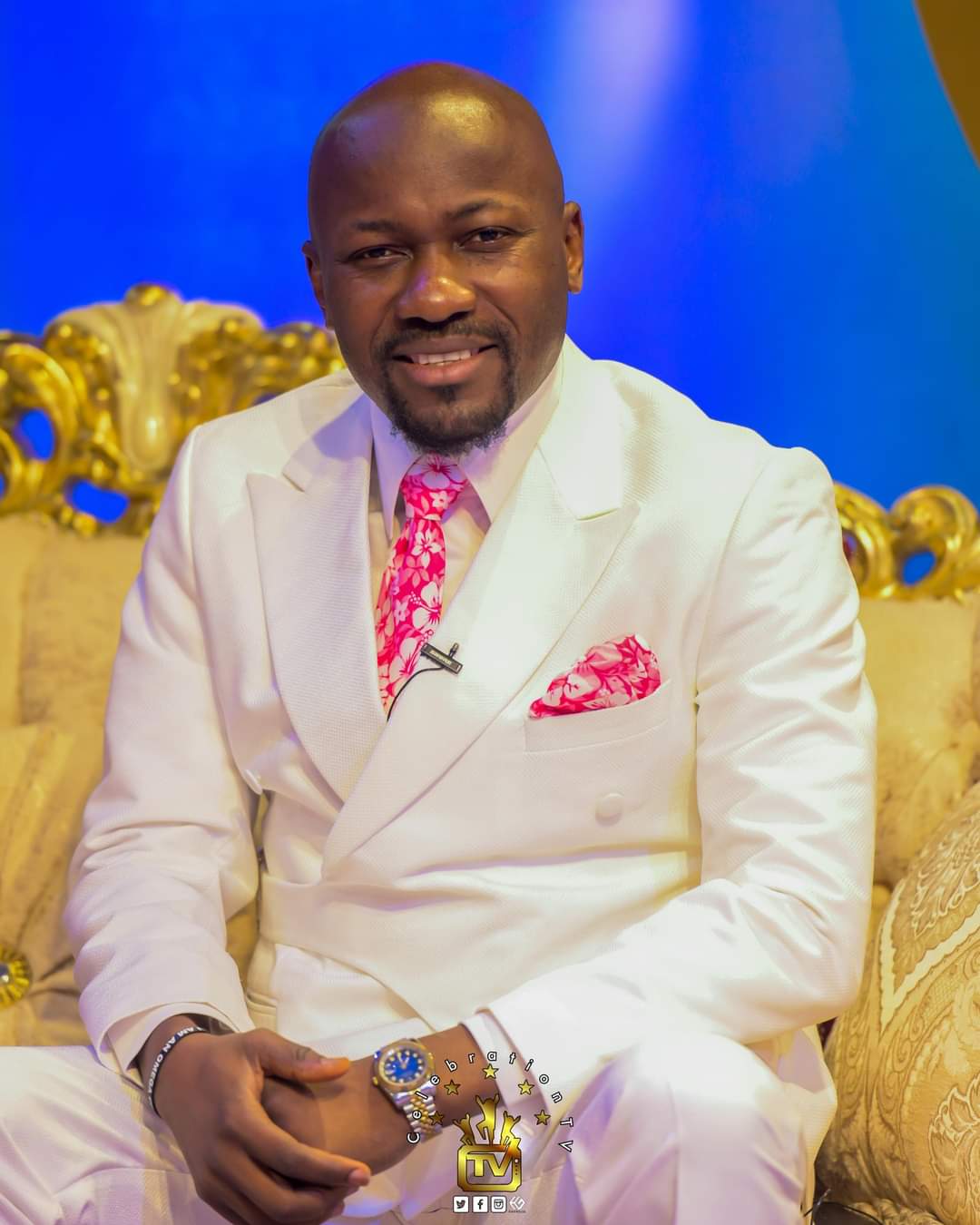
From Auchi to the World
Born in Auchi, Edo State, Nigeria, Apostle Suleman’s rise from humble beginnings to international prominence is nothing short of remarkable. What started as a divine calling has now evolved into a global mandate, reaching millions through Omega Fire Ministries International (OFM).
His story is the classic tale of vision meeting conviction—of a man who dared to believe God not just for himself, but for nations. From a modest congregation, OFM has spread like wildfire, with branches in Africa, Europe, Asia, the Americas, and beyond.
The Man & The Mission
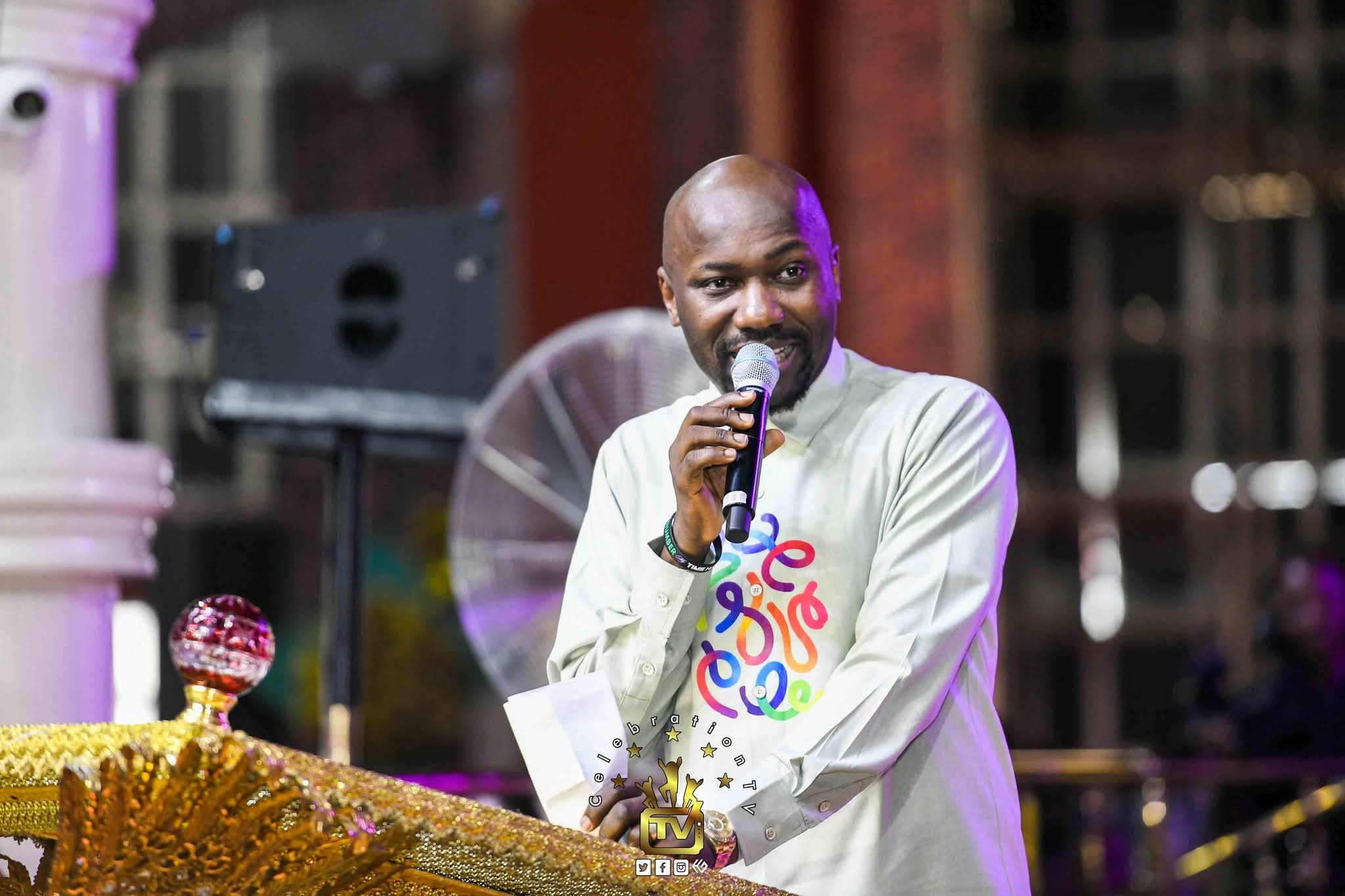
To know Suleman is to understand passion—passion for God, for people, and transformation. He lives by one mantra: populate Heaven, depopulate Hell.
His pulpit is a battlefield, his voice a trumpet, his words a sword. Through his fiery sermons, prophetic declarations, and healing crusades, countless men and women testify of divine encounters—cancers healed, destinies restored, impossibilities overturned.
But beyond the pulpit lies the heart of a humanitarian. Suleman’s mission has always extended beyond preaching. He funds scholarships for the underprivileged, empowers widows with homes, sets up businesses for struggling families, and supports countless orphans. In times of crisis, he has sent relief materials across regions, proving that true ministry is not only heard—it is seen.
The Impact
Step into one of his crusades, and the atmosphere tells its own story. Stadiums overflow. Multitudes gather, hungry for hope. From London to Houston, Dubai to Johannesburg, crowds testify to healings, deliverance, and restoration.
Through Celebration TV and other digital platforms, Suleman’s voice penetrates homes, villages, and cities, giving access to millions who may never step into a physical church. His boldness in confronting social ills and speaking truth to power has also established him as a fearless voice beyond the church walls.
The Global Moves
Apostle Suleman is not just a Nigerian voice—he is a global phenomenon. His recent international crusades draw audiences in their tens of thousands, breaking barriers of race, culture, and language.
From prophesying to presidents to laying hands on ordinary citizens, his message is universal: God still speaks, God still heals, God still restores.
Each global tour solidifies his place as one of the most influential Christian leaders of the 21st century. He is as comfortable commanding a crowd in Chicago as he is in Accra, as bold in Paris as he is in Abuja.
The Legacy in Motion
Apostle Johnson Suleman is more than a preacher—he is a movement. A man consumed by vision, driven by compassion, and equipped with an anointing that refuses to be confined by borders.
From Auchi to America, from pulpits to palaces, from widows to world leaders, his impact is undeniable. And as the Restoration Apostle continues to blaze trails across nations, one thing is certain: his legacy is still unfolding, and his global moves have only just begun.
society
Senator Musa’s Legacy of Intellect, Compassion and Delivery
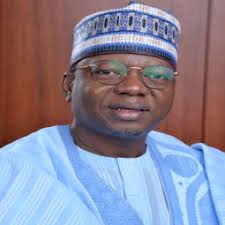
Senator Musa’s Legacy of Intellect, Compassion and Delivery
By Suleiman Adamu
In Nigeria’s dynamic democratic landscape, where leadership often teeters between self-interest and public service, few figures emerge as true exemplars of covenantal representation. Senator Mohammed Sani Musa, CON, affectionately known as “Musa 313,” stands as a beacon of intellectual rigour, empathy, and impactful delivery. Representing Niger East Senatorial District, he has woven a legacy of legislative excellence and grassroots development that resonates far beyond the confines of his constituency, touching the heart of Nigeria’s democratic aspirations.
Great leaders are not born of chance; they are shaped by discipline, preparation, and an unrelenting commitment to progress. Senator Musa embodies this truth. A proud son of Niger State, he embarked on an academic journey that laid the foundation for his remarkable career. At Ahmadu Bello University, Zaria, he earned a Bachelor of Science in Business Administration, specialising in Banking and Finance, in 1990. This degree was not merely a credential but a springboard for his intellectual evolution.
Driven by a thirst for knowledge, he pursued further studies at global institutions, securing a Postgraduate Diploma in Public Policy and Management from the University of London and a Postgraduate Certificate in International Management from the University of Liverpool. These academic milestones equipped him with a nuanced understanding of governance, economics, and institutional reform, moulding him into a technocrat with a worldview enriched by comparative models of development.
Long before he stepped into the political arena, Musa was already a thinker whose ideas were informed by global perspectives and a deep appreciation for systemic change. Senator Musa is no ordinary parliamentarian. His presence reverberates from the hallowed chambers of the National Assembly in Abuja to the dusty roads of rural Niger East. He is a statesman whose intellectual sophistication is matched by his accessibility and empathy, a rare blend that allows him to connect with both policymakers and ordinary citizens.
His nickname, “Musa 313” is a symbol of trust and familiarity, a proof of the bond he has forged with his people. Unlike many legislators whose names fade beyond roll calls, Musa has etched his mark on the annals of parliamentary relevance since his election in 2019. As Chairman of the Senate Finance Committee, he shoulders one of the most critical roles in Nigeria’s legislative framework. His committee oversees fiscal discipline, appropriation, and national planning—responsibilities that demand precision, foresight, and patriotism.
Under his leadership, oversight reports and finance bills are scrutinised with meticulous care, earning him the confidence of Nigerians who see in him a guardian of the nation’s economic integrity. Musa’s legislative contributions are profound and far-reaching. His sponsorship of transformative bills reflects a mind attuned to both the immediate needs of his constituents and the structural challenges facing Nigeria.
Among his notable legislative efforts is the Bill to Regulate and Formalise Employment of Domestic Workers, Interns, and Other Informal Sector Employees (SB 629, 2025), currently in its second reading. Another landmark proposal is the National Rural Employment Guarantee Bill of 2021, a bold initiative to combat rural unemployment and foster economic inclusion in Nigeria’s hinterlands. The Critical Infrastructure Protection Bill of 2021 addresses the pressing need to safeguard Nigeria’s assets against sabotage and insecurity, a critical issue in a nation grappling with infrastructural challenges.
Musa’s vision for education is evident in the National University of Health and Medical Sciences, Suleja Bill, which aims to bolster medical training and healthcare delivery. His Loan Recovery Regulation Bill of 2020 seeks to sanitise the banking sector, while the Constitutional Court of Nigeria Bill of 2020 underscores his commitment to constitutionalism. The Constituency Delimitation Centre Bill of 2020 further demonstrates his dedication to strengthening democratic representation.
Each of these bills reveals a legislator who thinks locally but legislates nationally, addressing the unique needs of Niger East while tackling Nigeria’s broader developmental imperatives. Yet, for Senator Musa, legislation is not an end in itself but a means to transform lives. He understands that parliamentary privilege must translate into tangible progress for his constituents. In Niger East, his interventions are a testament to this philosophy, touching every facet of human development.
In education, Musa recognises that knowledge is the ladder by which societies ascend. He has renovated classrooms and constructed a principal’s office at Government Technical College, Minna, ensuring that students learn in dignified environments. His establishment of an ICT Centre in Ija Gwari, Tafa LGA, is a forward-thinking investment in the digital economy, empowering rural youths to compete in a technology-driven world. His scholarship programs, spanning primary, secondary, and tertiary levels, have opened doors for countless students, with international undergraduate opportunities in China and India offering a global stage for Niger East’s brightest minds. These initiatives are not mere gestures but structural investments in the future, ensuring that the next generation is equipped to lead.
In healthcare, Musa’s mantra of “Health is Wealth” guides his efforts to improve lives. Across the nine local government areas of Niger East, he has facilitated the installation of solar power and generators in primary healthcare centers, ensuring that immunisation, maternal care, and rural treatments are not hampered by power outages. His commitment to maintenance ensures these facilities remain functional, bringing dignity and reliability to healthcare delivery.
In agriculture, the lifeline of Niger East, Musa’s benevolence shines through. He has distributed 10,000 bags of grain to alleviate hunger and provided farm implements and fertilisers to rural farmers, boosting productivity and food security. His tailoring empowerment scheme for 100 youths is a deliberate effort to catalyse cottage industries, fostering economic self-reliance and preserving the region’s agrarian heritage.
Musa’s infrastructure projects further illustrate his responsiveness to his people’s needs. In Ginyin Village, Shiroro LGA, he constructed a solar borehole, delivering clean, safe water to residents who once struggled for this basic necessity. A 1km road in Kuta, Shiroro LGA, has improved connectivity, while electrification projects, including 500KVA transformers in Iwa Gurara and other communities, have brought light to darkened villages.
The renovation of Sukeja Town Hall has provided a communal space for gatherings, reinforcing social cohesion. Each project—water for the thirsty, light for the darkened, roads for the isolated—reflects Musa’s ability to listen and act, addressing the immediate needs of his people while laying the foundation for long-term progress. What sets Senator Musa apart is his embodiment of the qualities that define an uncommon parliamentarian: intellectual grounding, legislative productivity, constituency visibility, empathy, and national relevance.
He is not a populist chasing fleeting applause but a leader who feels the pulse of his people and synchronises it with national priorities. While others may settle for episodic empowerment, Musa builds a systematic architecture of development, weaving together education, healthcare, agriculture, and infrastructure into a cohesive vision for Niger East.
In just two years in the 10th Senate, he has redefined parliamentary responsibility, proving that senators need not be absentee representatives or mere voices in the capital. His work is a bridge between law-making and life-building, a testament to his refusal to divorce policy from people.
Musa’s impact extends beyond Niger East. His legislative efforts address national challenges, from unemployment to infrastructure security, positioning him as a statesman of national consequence. His ability to balance local needs with Nigeria’s broader aspirations makes him a model for aspiring leaders. Niger East is fortunate to have him; Niger State takes pride in his achievements, and Nigeria is enriched by his service.
To honour Senator Musa 313 is to recognise a rare fusion of intellect, compassion, and delivery—a leader who has rewritten the narrative of representation. His contributions are luminous chapters in Nigeria’s democratic journey, illuminating the path for others to follow.
*Adamu PhD is a researcher writing from UniAbuja.
-
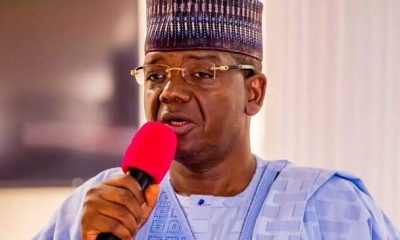
 society5 months ago
society5 months agoRamadan Relief: Matawalle Distributes Over ₦1 Billion to Support 2.5 Million Zamfara Residents
-
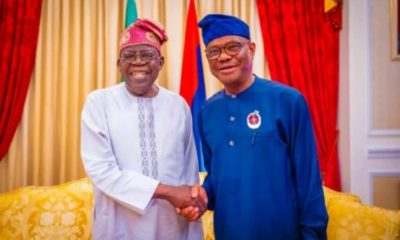
 Politics2 months ago
Politics2 months agoNigeria Is Not His Estate: Wike’s 2,000‑Hectare Scandal Must Shake Us Awake
-
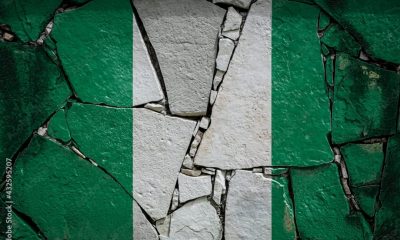
 society4 months ago
society4 months agoBroken Promises and Broken Backs: The ₦70,000 Minimum Wage Law and the Betrayal of Nigerian Workers
-
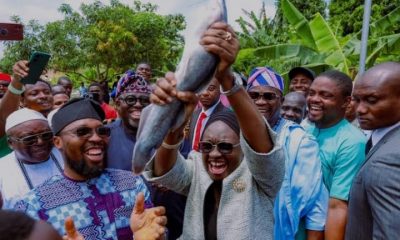
 society3 months ago
society3 months agoOGUN INVESTS OVER ₦2.25 BILLION TO BOOST AQUACULTURE






